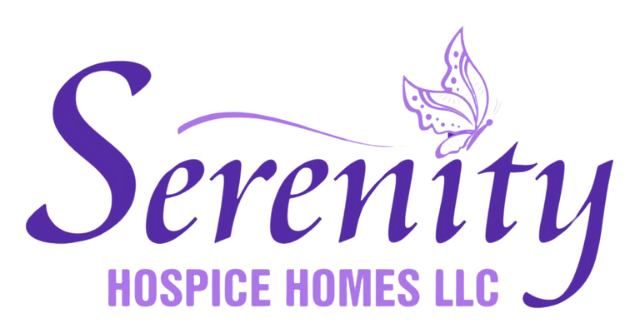The Financial Compass: Hospice Costs and Coverage in Minnesota
Money talks often fall silent when illness speaks its harsh truths. Yet understanding the financial landscape of hospice care remains vital for Minnesota families already navigating emotional terrain. “When hearts are breaking,” as one hospice financial counselor puts it, “the last burden anyone needs is financial uncertainty.”

Minnesota Hospice Coverage: Understanding Your Financial Options
You’re wondering how to pay for hospice care in Minnesota. The good news is that hospice coverage exists through multiple pathways, and most families find financial support for this care.
Understanding your options helps you make informed decisions during an already challenging time.
Medicare’s Hospice Coverage
For most Minnesota families, Medicare serves as the primary financial support for hospice care. This comprehensive safety net covers nearly everything related to terminal illness.
What Medicare Covers
Medicare wraps almost all hospice services in its coverage. The team that cares for your loved one—nurses who visit day and night, physicians guiding medication choices, aides helping with bathing, social workers handling practical problems, chaplains addressing spiritual questions—all come without bills.
Medications that ease pain and other symptoms arrive without pharmacy receipts. Equipment that transforms living rooms into care spaces—hospital beds, oxygen tanks, wheelchairs—appear without rental fees.
This bundled approach means families rarely see itemized bills for these care components.
Small Gaps in Coverage
Medicare’s coverage has a few small gaps. You might pay small copayments—no more than five dollars—for prescriptions. If caregivers need brief respite, a modest coinsurance (five percent of Medicare’s payment) applies for inpatient respite stays.
Monthly Medicare premiums continue as usual. But these minimal expenses are small compared to what serious illness typically costs outside hospice coverage.
What Medicare Doesn’t Cover
Medicare draws clear boundaries around its hospice benefit. Treatments aimed at curing rather than comforting the terminal illness fall outside these lines. Medications unrelated to the terminal diagnosis follow their usual coverage path through Medicare Part D plans.
Room and board costs—in your own apartment, assisted living community, or nursing facility—remain your responsibility. Medicare pays the hospice for care delivery but not for housing.
If patients seek hospital care without hospice coordination, they may face unexpected bills.
Other Care Continues
Not everything stops when hospice begins. Health needs unrelated to the terminal illness—arthritis treatment for someone with advanced cancer, insulin for diabetics with end-stage heart failure—continue under standard Medicare coverage with usual deductibles and copayments.
Medicare Advantage Plans
Those enrolled in Medicare Advantage plans face a split when electing hospice. Their hospice services flow through Original Medicare while their MA plan continues covering non-hospice needs. This requires little action from patients but helps prevent confusion.
Medical Assistance (Medicaid) Protection
For Minnesotans with limited income and assets, Medical Assistance offers perhaps the most comprehensive financial protection during life’s final chapter.
Coverage Mirror with Benefits
Minnesota’s MA hospice benefit largely mirrors Medicare’s approach to hospice services—covering team visits, medications for symptom management, and necessary equipment. But it adds two financial protections that set it apart.
No Cost-Sharing
Unlike Medicare with its modest copayments, Minnesota’s MA program shields hospice patients from cost-sharing entirely. No deductibles. No copayments for medications. No coinsurance for respite care.
This complete exemption removes even small financial barriers that might otherwise cause hesitation or hardship.
Room and Board Solution
Perhaps MA’s most significant advantage helps those residing in nursing facilities or intermediate care centers. While Medicare leaves room and board costs untouched, MA creates a payment pathway—forwarding 95% of the facility’s daily rate through the hospice to cover these substantial expenses.
This provision transforms what might otherwise be an insurmountable financial obstacle into a manageable transition.
Service Coordination
Electing hospice under MA does require navigating its relationship with other services. Personal care assistance services pause, and coordination becomes necessary for those receiving waiver services. Yet the principle stands firm—services addressing needs beyond what hospice covers should remain accessible.
Private Insurance Variables
Beyond government programs lies the diverse terrain of private insurance—where consistency gives way to variation and verification becomes necessary.
Coverage Range
Private plans range from generous mirrors of Medicare’s approach to more limited hospice benefits with significant restrictions. Some offer comprehensive hospice coverage with minimal cost-sharing. Others impose visit limits, specify network providers, or apply substantial deductibles and copayments.
This variation means there’s no universal “private insurance hospice benefit” but rather thousands of different arrangements.
Verification Is Key
Before hospice care begins, patients and families must become investigators. Contact your insurance company directly to understand your specific coverage. Key questions include which services are covered, which hospice providers are in-network, and what cost-sharing applies.
Many hospice agencies offer guidance through this process, using their experience with various insurers.
Alternative Payment Options
For some Minnesotans, other payment pathways open doors to hospice care. Veterans may access services through VA benefits. Those without insurance may find help through hospice foundations and charitable funds, especially through non-profit providers committed to serving regardless of ability to pay.
Private payment remains an option for those with financial means who may not qualify for insurance coverage.
Choosing Your Coverage Path
Standing at the intersection of eligibility and need, Minnesota families face important decisions about which coverage path best suits their circumstances.
Medical Assistance offers the most comprehensive financial protection, particularly for those requiring facility care, with its room and board provisions and freedom from cost-sharing. Veterans with service-connected conditions may find VA benefits particularly advantageous.
Medicare provides substantial coverage with minimal out-of-pocket costs for those ineligible for these programs. Private insurance requires careful verification to understand its specific provisions.
For families navigating this terrain, hospice admission teams and financial counselors serve as experienced guides. They help translate insurance language into clear understanding. Their expertise can illuminate coverage nuances, identify potential gaps, and suggest solutions before financial surprises add stress to an already challenging time.
In hospice’s compassionate approach, money matters are addressed openly but with sensitivity. The goal remains making sure that financial concerns never stand between patients and the comfort, dignity, and support they deserve as life’s end approaches.
As one Minnesota hospice director observed, “When someone asks about cost, they’re really asking, ‘Can we afford to do this right?’ Our job is making sure the answer is always yes.”
Minnesota Hospice Coverage Comparison
The following table provides a comparative overview of key coverage aspects under Medicare, Minnesota Medical Assistance (MA), and typical Private Insurance plans in Minnesota.
| Feature | Medicare Hospice Benefit (MHB) | Minnesota Medical Assistance (MA) Hospice Benefit | Private Insurance (General Notes) |
|---|---|---|---|
| Eligibility Basis | Medicare Part A; MD/Hospice certification (terminal, ≤6 mo prognosis); Patient election | MA eligibility; MD/Hospice certification (terminal, ≤6 mo prognosis); Patient election; Follows Medicare rules | Varies by plan; Typically requires MD certification (terminal, prognosis); Pre-authorization may be needed |
| Core Services Covered | Comprehensive team, nursing, physician, aide, social work, counseling, therapies | Comprehensive team, nursing, physician, aide, social work, counseling, therapies per MN Rule 9505.0297 | Often covers core services, but specifics (e.g., types of therapy, visit limits) vary by plan |
| Drugs for Symptom Management | Covered, related to terminal illness | Covered, related to terminal illness | Typically covered, may be subject to formulary, copays/coinsurance |
| Medical Equipment/Supplies | Covered, related to terminal illness | Covered, related to terminal illness | Typically covered, may require preferred suppliers, subject to cost-sharing |
| Short-Term Inpatient Care | Covered for symptom management | Covered for symptom management | Coverage varies; may require pre-authorization, subject to cost-sharing |
| Short-Term Respite Care | Covered for caregiver relief (up to 5 days) | Covered for caregiver relief (up to 5 days) | Coverage varies; may be limited or not covered |
| Room & Board in Facility | Not Covered (Medicare pays hospice a rate, but doesn’t cover patient’s facility fees) | Covered via Hospice Payment: MA pays hospice 95% of NF/ICF-DD rate for R&B; hospice pays facility | Generally Not Covered, but check specific plan details |
| Patient Cost-Sharing | No deductible; Up to $5 copay/drug; 5% coinsurance/respite day | Generally Exempt: Hospice patients exempt from MA copays/deductibles in MN | Varies Significantly: Deductibles, copays, coinsurance common; check plan details |
| Care Unrelated to Hospice Diagnosis | Covered by Original Medicare (or MA plan) subject to usual cost-sharing | Covered by MA subject to usual rules; coordination needed | Covered according to standard plan benefits, subject to cost-sharing |
This table provides a general comparison. Always verify specific details with the relevant payer.
The structure of MA coverage in Minnesota presents notable advantages for eligible individuals. The exemption from cost-sharing and the mechanism for covering room and board in long-term care facilities can significantly alleviate the financial pressures often associated with end-of-life care.
This is particularly true compared to the potential out-of-pocket costs under Medicare or the variability and potential limitations of private insurance. Assessing eligibility for MA is therefore a particularly important step for families exploring hospice options, especially if care in a facility setting is anticipated.
Have Any Questions ?
Need immediate support or have urgent questions? Call us now for compassionate guidance:
- 612 389 6993
- info@serenityhospicehomes.com
Articles

Quick Links
Articles
© 2025 • All Rights Reserved




